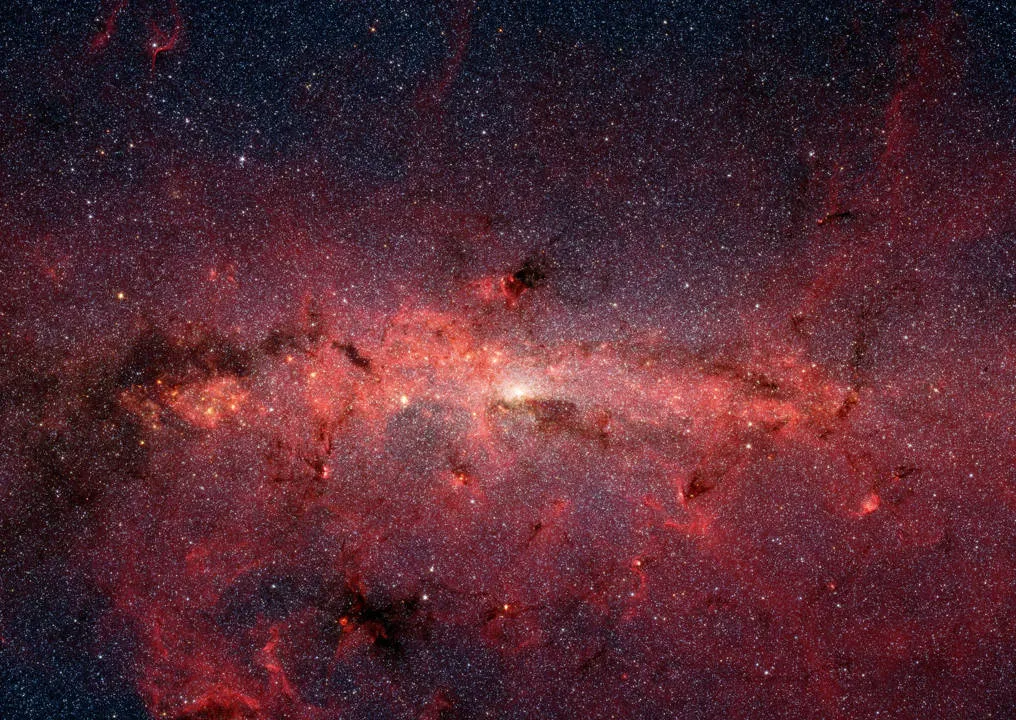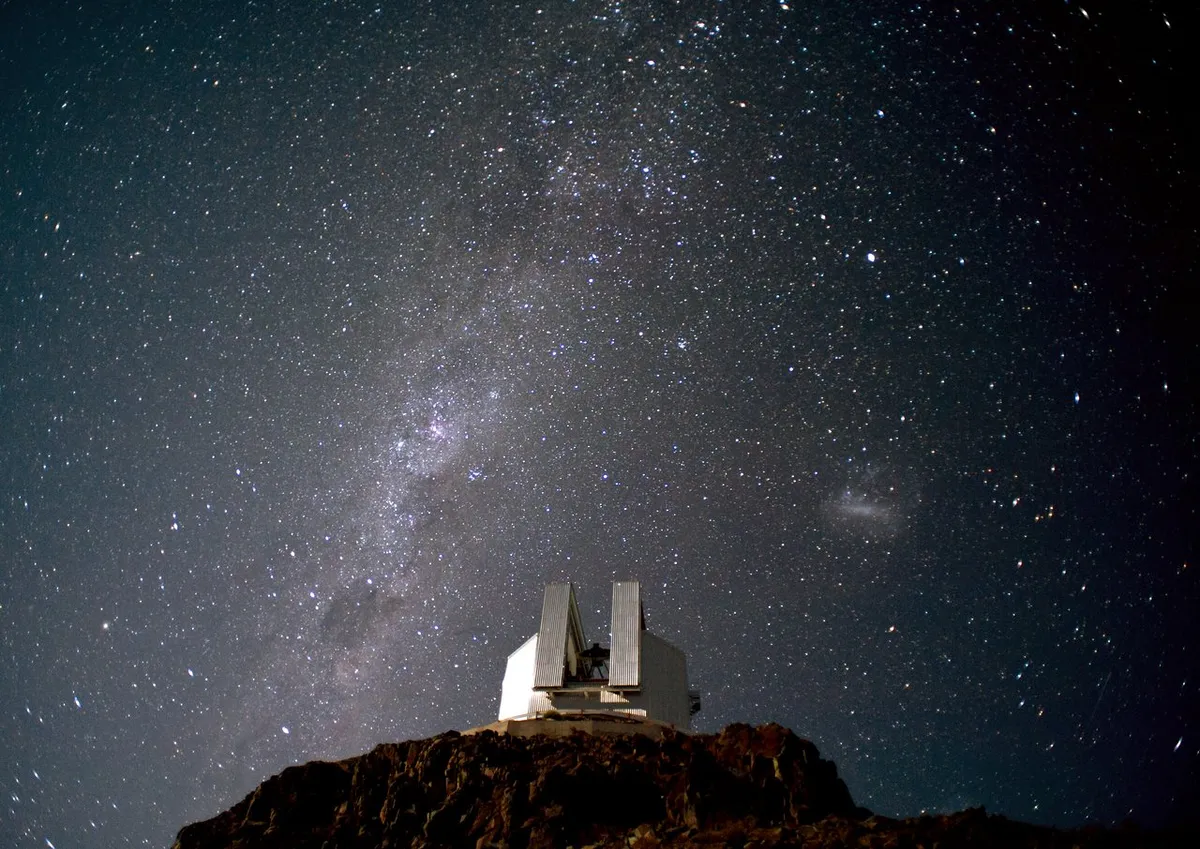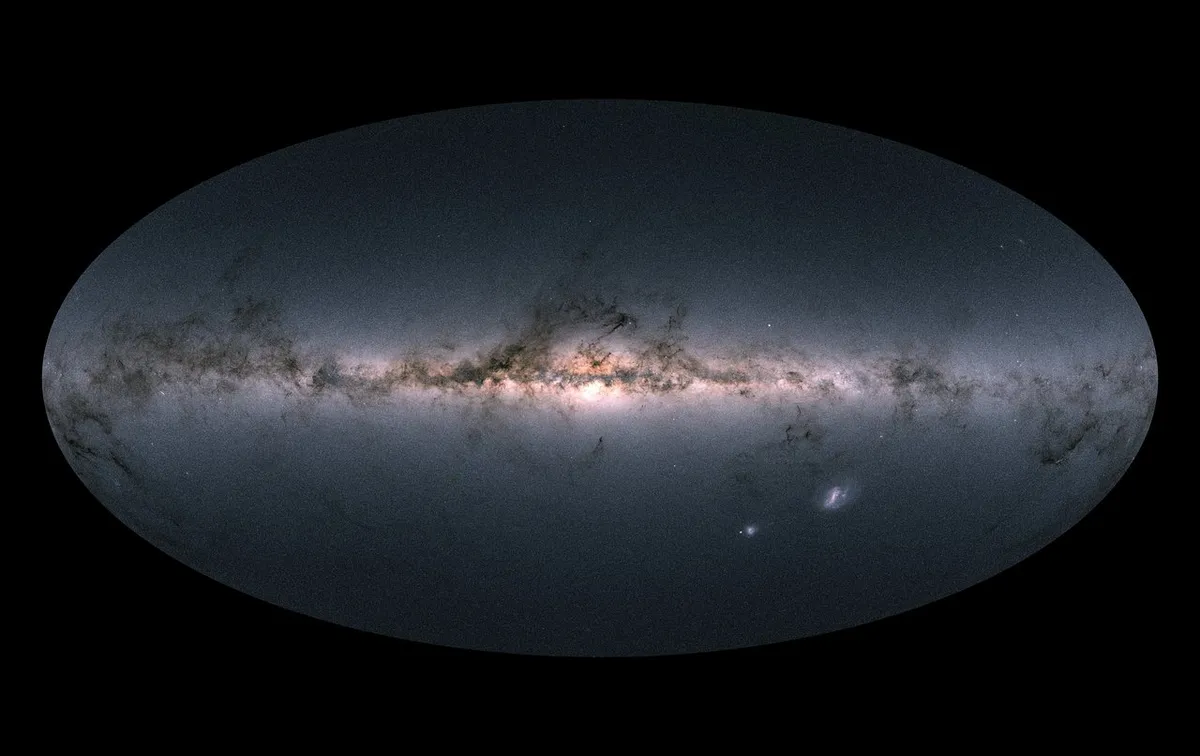In 2018 the second tranche of data was released from the Gaia mission to map the nearest billion stars. Ever since, astronomers have been picking through the treasure trove of data using Gaia’s measurements, and the flood of discoveries shows no sign of abating.
Astronomer Roberto Raddi in Barcelona and colleagues in Germany have sifted through the Gaia data to find 12 stars speeding through a region where they don’t belong, far from the Milky Way’s disc.
Though we generally picture the Milky Way as a thin disc with a central bulge – think of Patrick Moore’s description of the Galaxy as ‘two fried eggs, clapped back to back’ – there are stars that exist above and below the disc, travelling on their own unusual orbits around the Galactic centre.
Did you know that the Andromeda Galaxy is set to collide with our the Milky Way? Find out more in Chris Lintott's guide to the Andromeda-Milky Way collision.

Mostly, these stars have ended up there after long and eventful lives, but the unusual thing about the stars studied by Raddi and his colleagues is that they are young: young enough that we’d like an explanation for why they’re so far from the densely populated disc where they must presumably have been born.
The stars in question were first identified in the Gaia database, and then their properties determined during a run on the New Technology Telescope in Chile.
The runaway stars are between two and four solar masses, and the assumption is that most formed in the dense environment of a young open star cluster.
In such a cluster, occasional random interactions between the jostling stars may lead to the expulsion of one of the cluster’s members.

Alternatively, if one of the stars in a binary star system goes supernova the surviving star may receive an almighty kick, being thrown out of the cluster and out of the disc of the Galaxy.
Given their speeds and positions, this sort of origin story makes sense for 9 of the stars.3 of the stars, though, are moving too fast for either of those mechanisms to be responsible.
Our understanding of the physics involved in these mechanisms means that it turns out the maximum speed that can be reached is 450km/s, but three must have exceeded that.

These stars, rushing away from the disc, present a true mystery. It’s not at all clear how they came to be, and further work on more speculative possibilities for their origin is needed.
Perhaps, somehow, they formed in the thin gas that surrounds the main disc.
However they set off on their current trajectories, the fate of these unusual stars is clear. 11 of the intrepid 12 will remain part of the Milky Way family, existing on orbits that take them high above and then far below our Galactic disc.
One of the cohort, though, has a grander fate. 2207-4329 will join a select band of intergalactic wanders, spending the rest of its life out in the cosmic gloom.
Chris Lintott was reading Runaway blue main-sequence stars at high Galactic latitudes. Target selection with Gaia and spectroscopic identification by Roberto Raddi et al. Read it online at arxiv.org.
This article originally appeared in the January 2021 issue of BBC Sky at Night Magazine.

